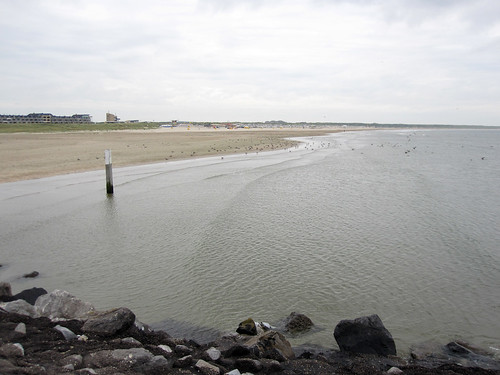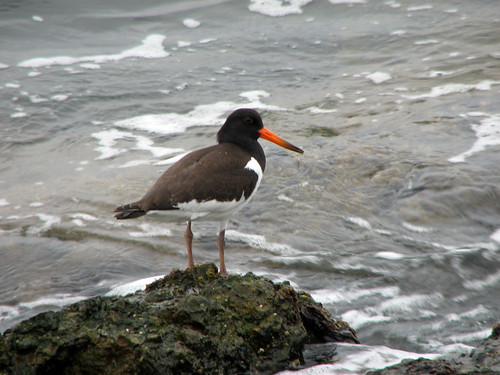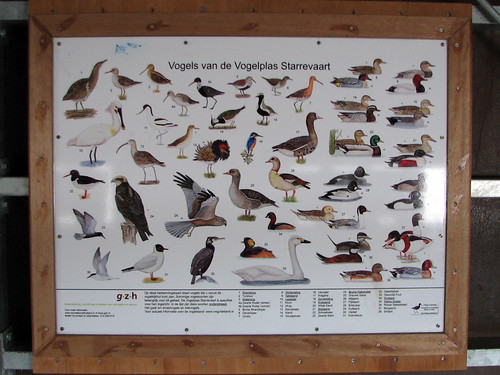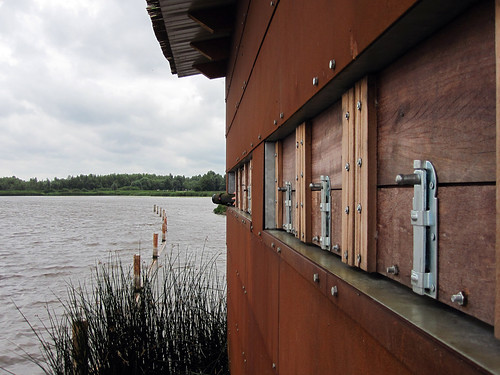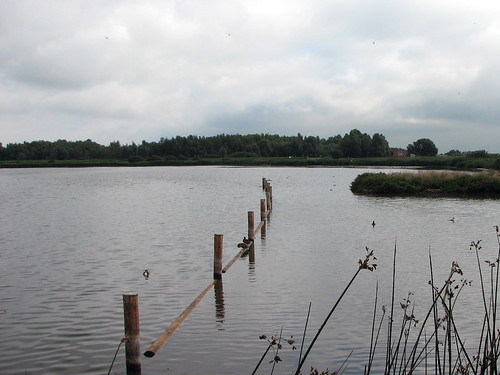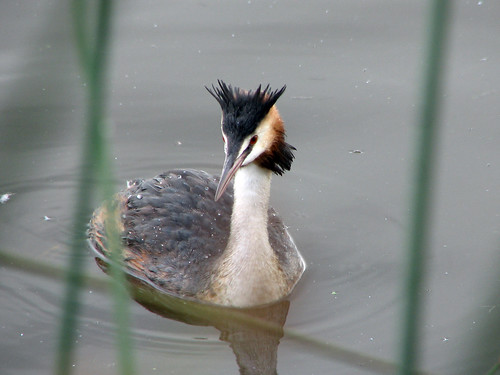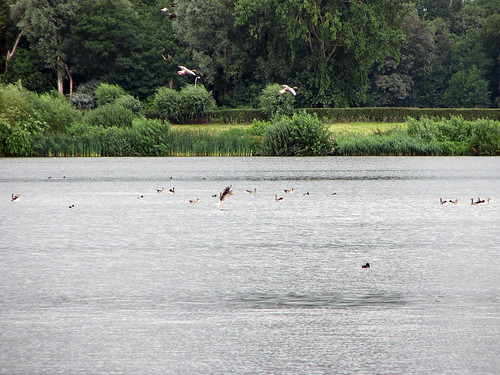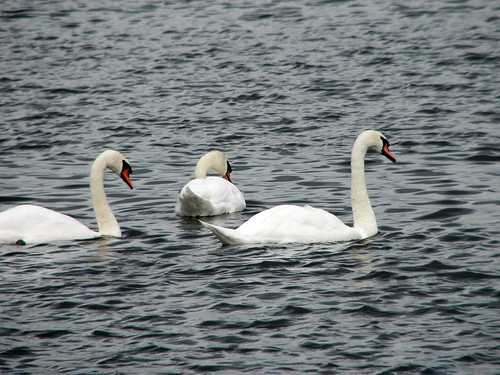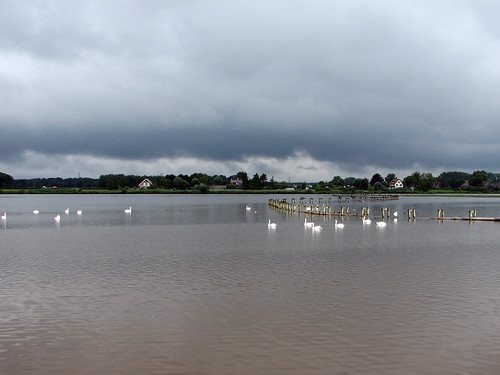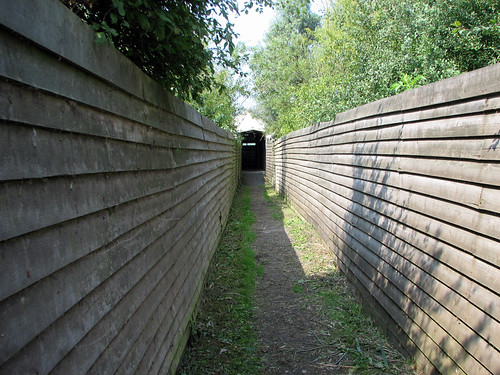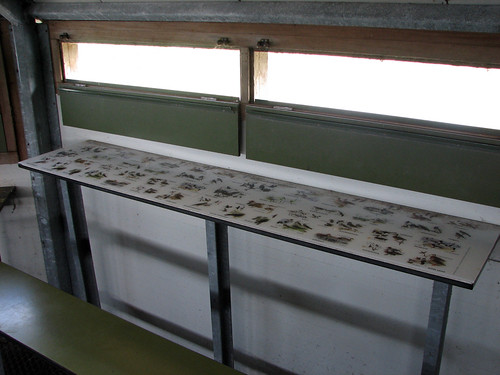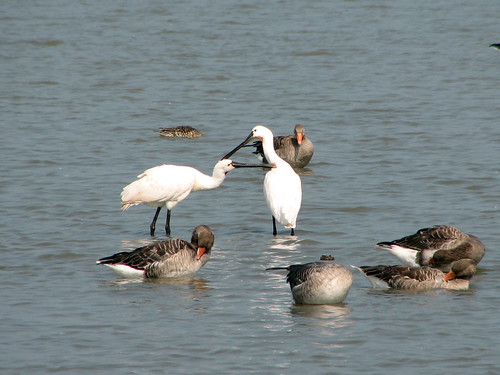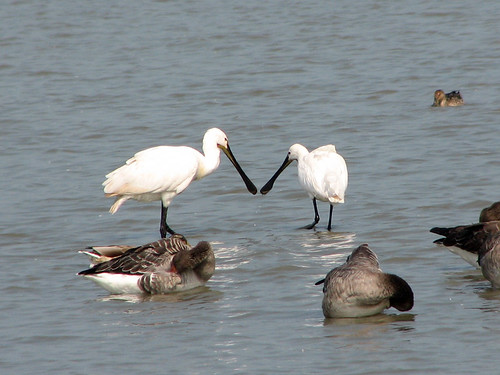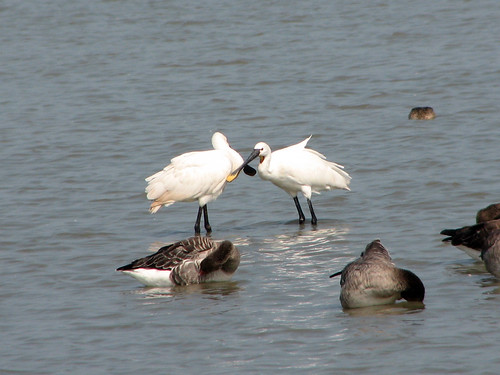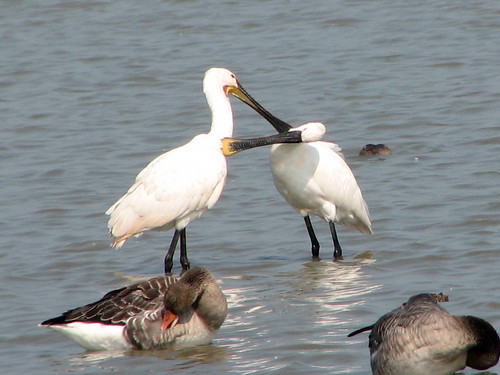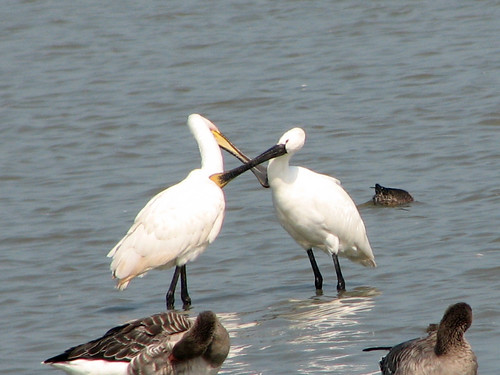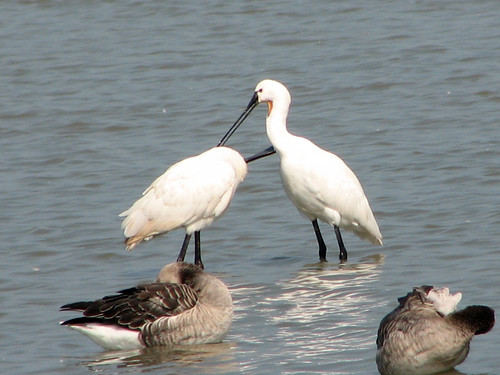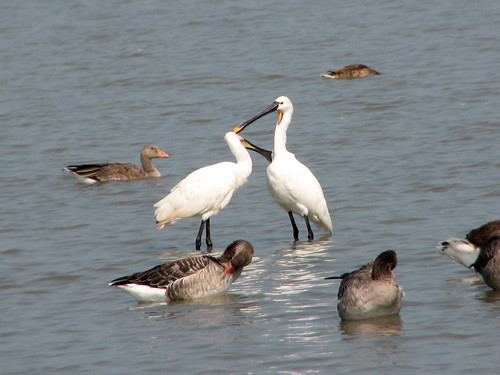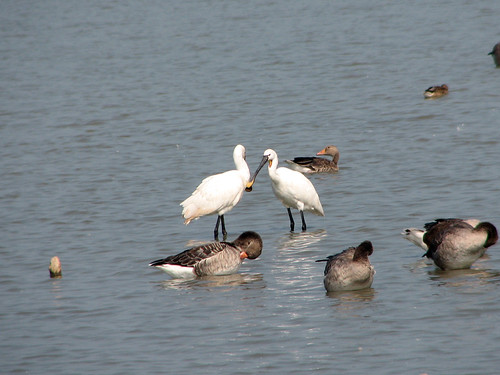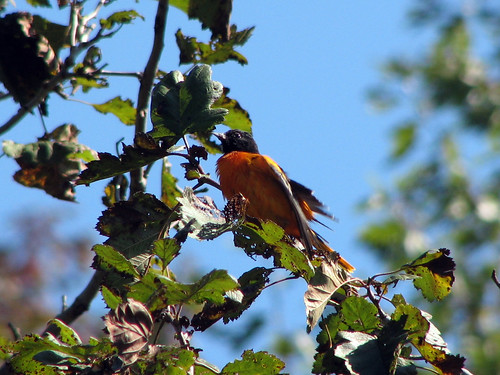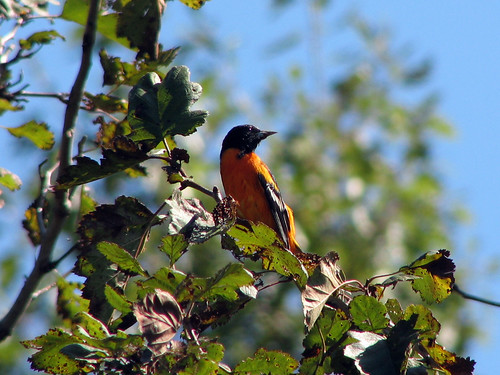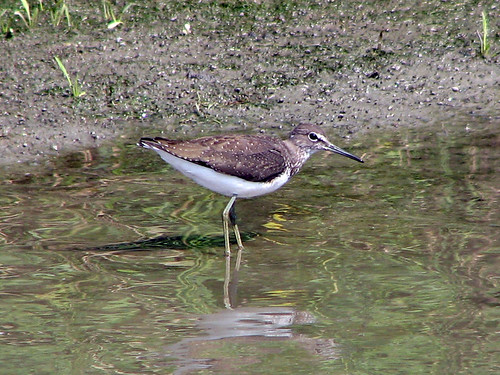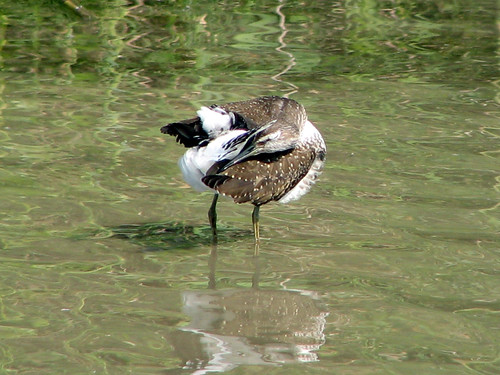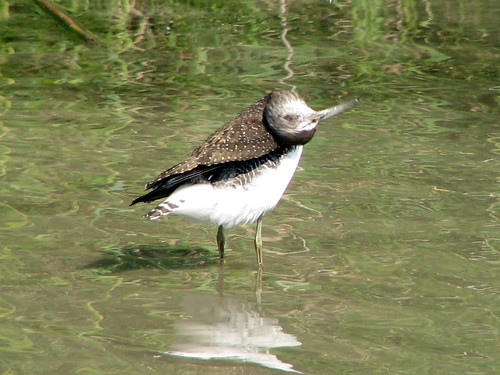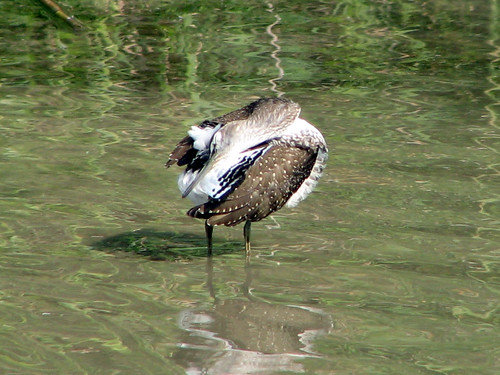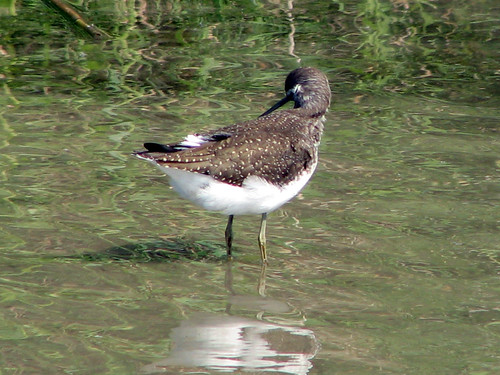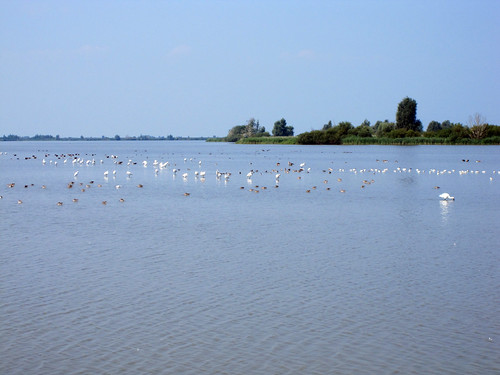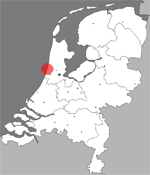
(source)
IJmuiden is located at the mouth of the IJ river and is an important port, connecting Amsterdam to the North Sea. The Zuidpier (south pier) juts about two kilometers into the North Sea. The small map at right shows the approximate location of the pier. Below is a what the pier looks like on Google maps. As part of our short birding trip based out of Leiden, IJmuiden was our next major stop (following the Oostvaardersplassen).
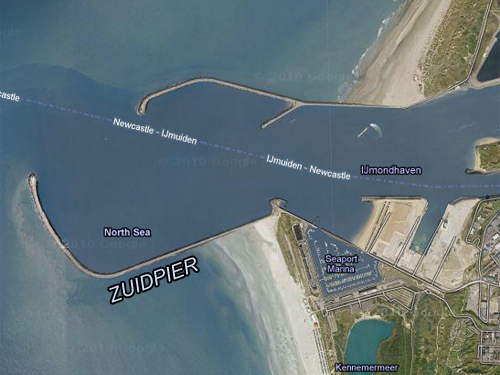
We visited on a windy Sunday. The forecast was horrible so we weren’t too surprised to see few other people out on the pier. The only creatures on the beach were gulls, and our first Eurasian Oystercatchers of the trip.
We were on a tight schedule so we had no choice but to visit IJmuiden on the day we did, but we lucked out with the weather, mostly. It didn’t rain but ominous clouds hung low all morning and the wind was fierce. There were a few sport fishers on the pier; we were the only birders. The below picture was taken at the start of the pier, with the beach on the left side. On the far right you can see the lighthouse on the end of the pier. It was a long, windy walk!
Unfortunately, it wasn’t too birdy. We did get some nice looks at another oystercatcher, plus small groups of Ruddy Turnstones turned up every few meters and didn’t mind us stopping to snap some photos.
The Red Knot and Stonechat were not so accommodating. That’s birding. Win some, lose some.

